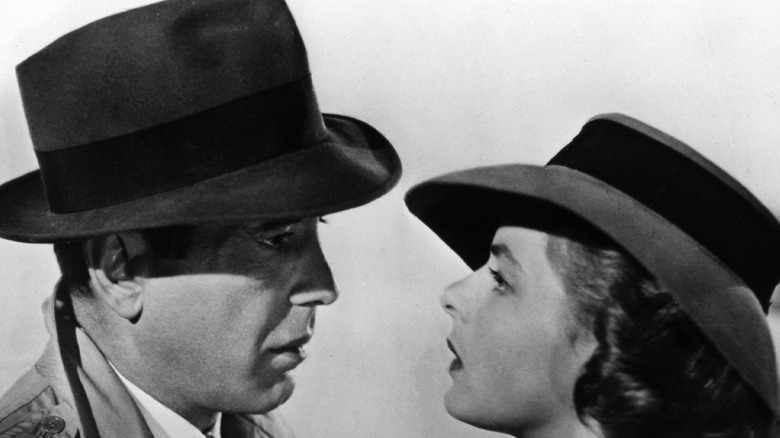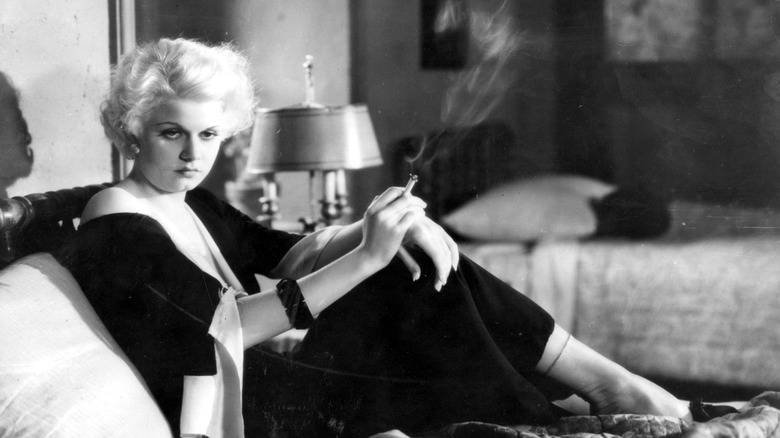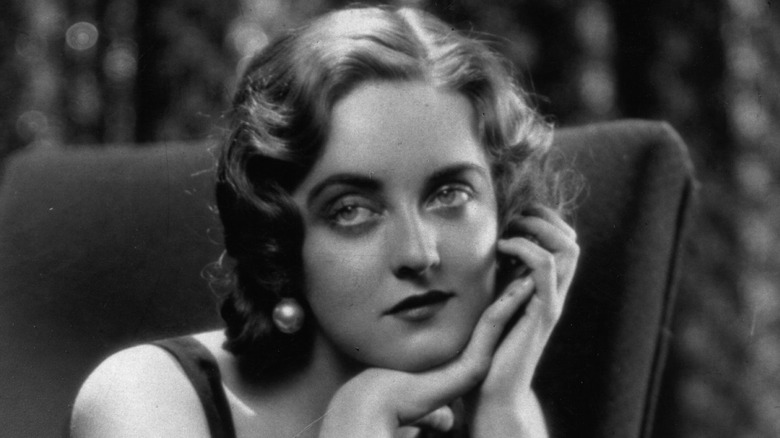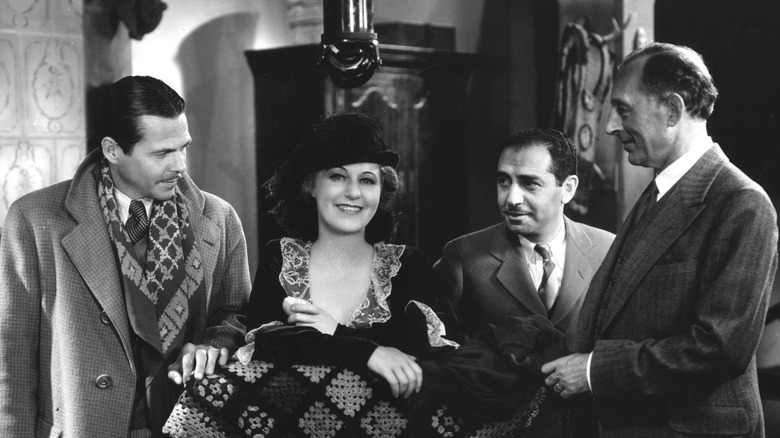The Horrible Truth Behind Old Hollywood's Secret Abortions
The word abortion today evokes strong feelings from many, whether they are vehemently opposed to women ending unwanted pregnancies or whether they are strongly in favor of a woman's right to choose whether she carries a pregnancy to term. Regardless of anyone's feelings about abortion though, they've been happening for a long time, even before the 1973 Supreme Court decision that legalized abortion in the United States, Roe v. Wade.
In fact, abortions were relatively commonplace — though a closely guarded secret — during the so-called Golden Age of Hollywood, which spanned from the 1910s to the early 1960s. It was called the "golden age" because according to Arcadia Publishing, filmmakers continually expanded what could be done in cinema, new technologies were constantly being developed and utilized, and there was much innovation and creativity in the developing industry.
It was also a time of great power for the handful of production companies that controlled the industry. Those companies, including MGM, Paramount, and 20th Century Fox, held all the cards regarding aspiring stars' and starlets' dreams of being on the silver screen. In order to achieve their movie star goals, actors had to sign lengthy contracts that included controlling many aspects of their personal lives, Harper's Bazaar reported, including the stipulation that young starlets could not become pregnant, as the production companies wanted their star actresses to either be perceived as sex symbols or the girl-next-door — Ginger or Mary Ann — and motherhood didn't jibe with either of those perceptions.
Abortions were required by production studios
Public perception wasn't the only reason studios didn't want their talent getting pregnant. Essentially, production studios were creating a product to sell, and their actresses were integral to the success of that product. Contracted talent was expected to star in several movies per year, so pregnant bodies were out of the question for the roles they were to play.
Pregnancy was a breach of contract under a stipulation called "morality clauses," regardless of a woman's marital status. Yet according to Vanity Fair, many old-Hollywood actresses got pregnant, some more than once.
Birth control existed in rudimentary forms back then, and it was not exactly widely available, according to Red Book. But what was available to Hollywood starlets who were under contract by powerful men to maintain their figures and their public images were abortions. Per Vanity Fair, an anonymous actress of that time said, "abortions were our birth control."
Studios not only required abortions if the actresses wanted to keep their careers, they also arranged for starlets to abort their pregnancies. Due to the prevalence of Hollywood abortions, one man who earned a reputation as a "fixer" — or someone who fixed the problem of a pregnant starlet — was Howard Strickling, a publicity agent with Metro-Golden-Mayer (MGM), who started with the production studio in 1919 and retired in 1969, per The New York Times.
Strickling said stars did what the studios wanted because 'we knew best'
Vanity Fair wrote that Strickling was often called upon to arrange abortion procedures while handling the media by saying things like a particular actress was admitted to the hospital for an appendectomy or an ear infection, or because they needed some rest. According to The New York Times, Strickling said in 1969, ”We told stars what they could and couldn't say, and they did what we said because they knew we knew best. When things went wrong, we had a way of covering up for them, too.”
Some actresses took the abortions in stride as a thing they accepted was a necessary part of their career. Bette Davis once told a biographer that if she hadn't aborted a pregnancy incurred by her husband in 1934, she would have missed the biggest role of her life that begat other important roles. She later had three children and said due to her abortion she was able to have a career and later, a family. Davis said, "I didn't miss any of these roles, and I didn't miss having a family," per Vanity Fair.
Other actresses had a difficult time. Rita Moreno did not particularly want to abort her pregnancy by Marlon Brando, according to Vice, but he did not want the child and she knew seeing the pregnancy through would end her acting career, so she chose to have the abortion. The person who performed the procedure left fetal tissue inside of her and Moreno nearly bled to death, Vice reported.
Hollywood starlets' lives were not all glamour
The circumstances surrounding the lives and careers of actresses in old Hollywood were a mix of new-found independence and excitement at the possibilities of a life that offered unprecedented opportunities for women who were not born into wealth, including financial autonomy, the adoration of fans, fancy parties, and mixing and mingling with the beautiful and powerful elite of Tinseltown, many things that look shiny and glamorous from the outside looking in.
But belying all of that was the yoke of production studios, run by men who still called a lot of the shots as to what contracted starlets could do, how they could behave, whom they could marry, what weight they were required to maintain, and what roles they could play on screen, and off, according to Harper's Bazaar.
The real-life role of being pregnant or a mother was frowned upon for young and beautiful Hollywood stars. Instead, what was more acceptable to production studios was coerced, illegal, and potentially life-threatening abortions.



